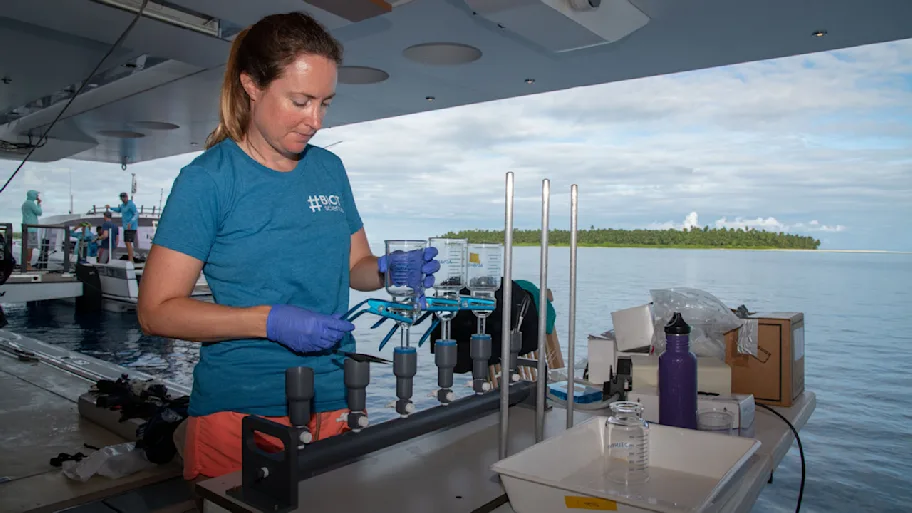
- Science news
- Environment
- Restoring Asia’s roar: Our plan to see tigers flourish again in historic locations
Restoring Asia’s roar: Our plan to see tigers flourish again in historic locations
By Dr Thomas Gray, WWF Tigers Alive Initiative

Image: Shutterstock.com
Dr Thomas Gray is a conservation biologist and Tiger Recovery Lead at the WWF Tigers Alive Initiative. His current research focuses on the active recovery of threatened Asian species and sustainable financing for landscape-scale conservation. In this newest guest editorial, he explains how habitats from which tigers have been lost could be restored and how this may help biodiversity and landscape restoration at large.
Tigers are Asia’s iconic predator and, perhaps, the most recognizable species on the planet. Tigers used to occur over vast areas of Asia: from the Black Sea of Turkey to the Korean Peninsula and south through the rainforests of south-east Asia to the islands of Java and Bali. However, as a result of centuries of persecution and habitat loss, tigers currently occur in only a tiny fraction of this historic range.
More tigers, but difficult circumstances
Since 2010, a ‘year of the Tiger’ under the Asian lunar calendar, there has been considerable global attention on tiger conservation. This attention appears to have reversed the decline in tiger numbers with the 2022 IUCN Red List Assessment estimating around 4,500 wild tigers remain in the world (an increase from around 3,200 in 2010).
This increase is largely a result of strong protection of source breeding populations in protected areas in south and east Asia and is exemplified by India which, in April 2023, announced a minimum population estimate of 3,167 tigers.
But despite global tiger populations increasing, the species occurs in fewer places than ever before. During my career as a field biologist in south-east Asia, we have seen the last tigers lost from entire nations, such as Cambodia and Laos, as well as from many of the region’s protected areas such as Kuiburi National Park in Thailand. Breeding tigers now only occur in 10 countries: Bangladesh, Bhutan, China, India, Indonesia, Malaysia, Myanmar, Nepal, Thailand, and Russia.

One of the last tiger records from Cambodia: a camera-trap photograph from eastern Cambodia from 2005. Image: WWF Cambodia.
If we are to sustain tiger recovery, we need to expand the species’ occupied range. Increasing the distribution, and the ecological breadth of places where tiger occur and are functional, is necessary to recover the species globally. And there are templates for success. In many parts of Europe and North America carnivore populations have recovered and expanded their range due to both reintroductions (ie releasing either captive-bred or wild caught carnivores into landscapes from which they have been lost) or through natural movements and dispersal.
This process of natural range expansion is already being seen in tigers with individuals from the Russian far east known to disperse into adjacent areas of north-east China and establish new breeding populations. Meanwhile tiger reintroductions in India, such as those into Panna Tiger Reserve in the central Indian tiger landscape, have led to rapid increase in populations and distribution.
Opportunities for tiger range expansion
In our recently published paper in Frontiers in Conservation Science, I, together with co-authors, examined where else across the vast historic range of tigers there are opportunities for the species to return: either through natural dispersal from currently occupied areas or through active reintroductions implemented by governments and conservation agencies.
We found that there are more than 1,290,000sq km of former tiger range with similar characteristics to places currently occupied by tigers. These range expansion landscapes are found in 14 countries: the 10 which currently have breeding tigers as well as Kazakhstan, Cambodia, Laos, and Vietnam.
Tiger range expansion represents an opportunity for conservation which would not only help recover tigers but also meet the goals of the new Global Biodiversity Framework. Less than 20% of the range expansion landscapes we identified are currently within formal protected areas. By partnering with local communities to establish and formalize Other Effective Area-based Conservation Measures (OECMS) these landscapes can be protected and thus contribute towards the 30 by 30 goal of increasing protected area coverage and representativeness.
Ensuring food for tigers
For all of the landscapes we have identified, there is a need to understand why tigers are absent and implement conservation and social programs to address these factors. One of the most important constraints on tiger recovery is lack of food. Across vast areas of Asia hunting – in many cases driven by the illegal wildlife trade – has significantly reduced populations of the main tiger prey species, particularly wild cattle and large deer. For example, whilst no Asian carnivores are critically endangered globally, there are seven critically endangered ungulate tiger prey species in south-east Asia alone. Additionally, half of the mammalian prey species of tiger are threatened with extinction, and roughly 80% have decreasing population trends.

Collared Sambar deer, Mae Wong National Park, Thailand.
Sambar deer are the ideal prey for tigers in Thailand but in many places their populations are too low to support an increase in tiger populations. In 2021 32 sambar deer were released into Mae Wong National Park. Some of the deer were fitted with satellite collars to track their movements, which helps the research teams understand the deer’s movements. More releases are planned for 2022.
Translocated sambar from Thailand’s Western Forest Complex: part of a program to recover tiger prey populations. Image: W Phumanee, WWF Thailand.
Recovering tiger populations in many places will therefore require increasing prey populations. This can be achieved through a combination of stronger law enforcement and protected area management, habitat restoration or active prey translocations, and targeted behavior change campaigns in order to reduce demand for wildlife meat particularly amongst the growing urban middle classes.
Opportunities for reintroduction
Tiger reintroduction is the most complicated tiger conservation activity, but it can be successful. The lessons learned and approaches implemented for carnivore translocations globally are likely to increase the success of such approaches. At least four landscapes which we identified in our analysis – the Ile-Balkash Delta of Kazakhstan, the Cardamom Rainforest and Eastern Plains Landscapes of Cambodia, and the Greater Khingan Mountains of China and Russia – are the focus of current tiger reintroduction plans. Those in Kazakhstan, where initial tiger releases are planned before 2030, are the most advanced.
We believe that securing a viable and ecologically representative future for tigers requires both securing current populations and expanding the occupied range. We hope our findings can be used to support a proactive planning for future tiger range expansion. This should include both places into which tigers may naturally disperse and those which may be suitable for future reintroduction. Tiger reintroductions can galvanize conservation efforts, help protect additional habitat and support the expansion of protected habitat. Focusing conservation efforts on some of these places could prepare them for the return of the tiger whilst also securing critical conservation landscapes and benefiting both people and wildlife.
If you have recently published a research paper with Frontiers and would like to write an editorial about your research, get in touch with the Science Communications team at press@frontiersin.org with ‘guest editorial’ in your subject line.
REPUBLISHING GUIDELINES: Open access and sharing research is part of Frontiers’ mission. Unless otherwise noted, you can republish articles posted in the Frontiers news blog — as long as you include a link back to the original research. Selling the articles is not allowed.






